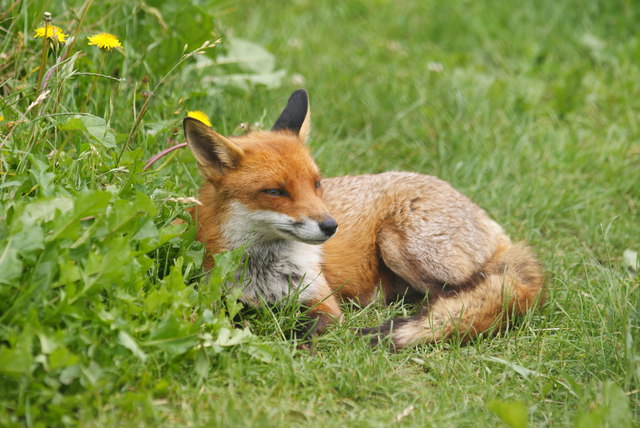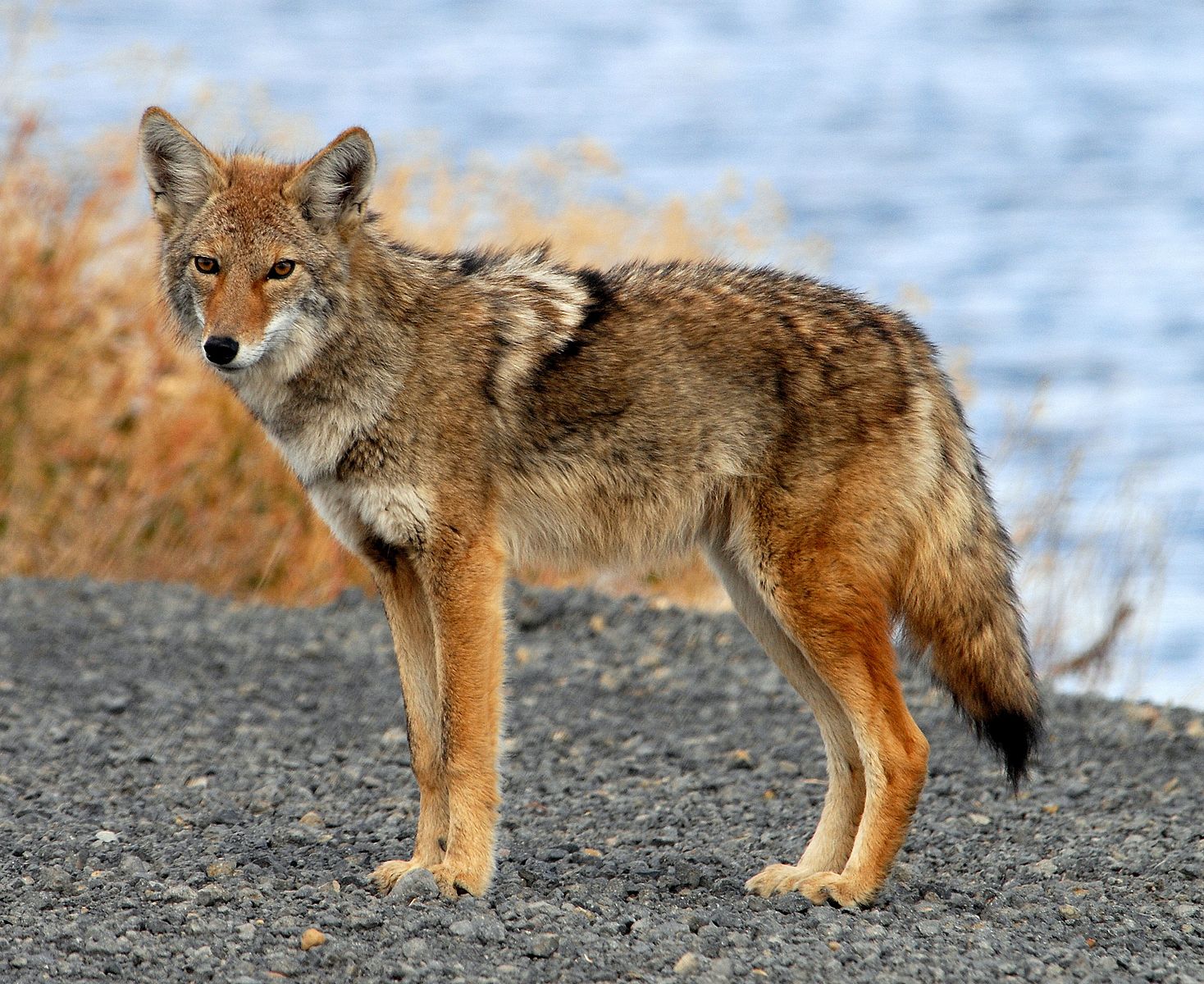Difference between Coyotes and Foxes
Coyotes and Foxes are members of the same family, the Canidae – known as the canines. Given the chance to spot them in their habitats, it may be challenging to spot the difference between a coyote and a fox because of their similarities at a glance. But, looking closely, one would firstly notice that coyotes are much larger than the foxes.
In the family, coyotes are larger than foxes but are smaller than the wolves. To help clear the confusion of similarities between the foxes and the coyotes, this article highlights the key differences between these species. Usually, the Canidae family is further categorized into the Vulpini where the foxes fall and the Canini where the coyotes and the wolves fall.

What are foxes?
Foxes are present in a variety of species. Usually, the gray and the red foxes are prevalent in North America, Canada, South America, Europe, Asia and even Africa. They are highly versatile and adaptive canines that can occupy diverse habits, be it the grasslands, the desert, mountains or the forests. Some even find refuge in habitats that are in close proximity to human beings because of the fear of coyotes if they invaded their territory.
Although the color variations may differ, especially between the gray and red fox, foxes are generally noticeable with a pointy tale and thick muzzles. Being the smallest canines, they weigh between 8 and 20 pounds. They live solidary lives most of the times and hunt alone, but can meet during their mating season. Winter marks their mating season and 2 to 12 pups are brought to life.
Foxes have a 52-day gestation period. After birth, the pups are kept in the den within the initial 3 weeks while being fed. In the 4th week, they start popping out of the den but still under watch by their parent. Then after 6 months, they transition into adulthood where they can start finding their mates and living independently.
With regard to diet, foxes can feed on both small animals and fruits. They hunt for rabbits, birds, reptiles, snakes, insects and other small mammals. Because of their compactness, they are incapable of hunting deer, sheep, goats, etc. They often save the remains to consume them the next day, but coyotes usually steal the food.
In appearance, red foxes have a white tip on the tail, long body-length tail and a black color behind the ear tips. Then the gray fox has a black tip on the tail and orange color behind the ear tips. Only color variations differ while other characteristics are identical.

What are Coyotes?
Appearing with a black tip on the tip, shorter tail than the body and an orange behind the ear tips, coyotes are the big brothers to foxes. They weigh up to 47 pounds, which is much larger than the foxes. Because of this size, they are capable of hunting bigger animals such as the deer than foxes would. Some of their diets overlap, such as eating the rabbits, reptiles and other small mammals. This explains why you will seldom find coyotes and foxes in the same habitat. In some cases, coyotes can prey on foxes and their cubs. Coyotes can also prey to other big cats such as tigers, bears and even their bigger brothers, the wolves.
Coyotes are described by a light gray, red, white and black-colored fur. There could be color variations depending on geographical locations. The body length extends to 40 inches. Their snout is long and thin with triangular ears and a bushy tail. At the base of their tail sits a bluish-black scent.
Unlike foxes, coyotes usually live in packs. They mate in mid-January to February and have a 60-day gestation period. The female gives birth to 2-10 pups which may survive with their moms away after 7 weeks. In their 7 month, the cubs can accompany their moms to hunting.
Just like the foxes, coyotes can also adapt to diverse habitats. They are known to invade the foxes’ habitats and can even occupy their dens during gestation period. They can also be found in North and South America, Europe and Asia. And their habitats include the mountains, grasslands and the deserts.
Key Differences between Foxes and Coyotes
Appearance of Foxes and Coyotes
Foxes are the small canines weighing around 8 to 20 pounds. They have slanted eyes, upright ears, long tail, short limbs with an elongated body and a flat skull. Coyotes, on the other hand, weight from 20 to 46 pounds and have a long snout with triangular ears. They are larger than foxes but smaller than the wolves.
Diet of Foxes and Coyotes
Both foxes and coyotes have overlapping diets. Because of their larger body, coyotes are capable of killing the deer. These two species can feed on rabbits, lizards, snakes, reptiles and other small mammals.
Behavior of of Foxes and Coyotes
Foxes are solitary animals; they only live with the female when it’s mating time. Coyotes are social animals that live in packs. Foxes are nocturnal animals whereas coyotes can also hunt during the day.
Foxes Vs. Coyotes: Comparison Chart

Summary of Foxes and Coyotes
- Foxes and coyotes are the canines where the foxes are the smallest to the coyotes but the coyotes smaller than the wolves
- They have the same habits and can adapt to diverse environments such as mountains, forests, grasslands and deserts
- They have an overlapping diet, but coyotes can also feed on foxes or just kill them to reclaim their territory
- Coyotes live in packs and mate mid-January to early February whereas foxes mate December to February and are solidary animals. They live in the same range as females during mating
- Coyotes can hunt during the day whereas foxes are nocturnal animals
- Difference Between CBD and Indica - April 22, 2019
- Difference Between Unilateral Contract and Bilateral Contract - February 8, 2019
- Difference Between Polki and Kundan - December 15, 2018
Search DifferenceBetween.net :
5 Comments
Leave a Response
References :
[0]Smith, RP (1982). Animal Tracks and Signs of North America. Stackpole Books. Science.
[1]Hodge D (1999). Wild Dogs: Wolves, Coyotes and Foxes. Demco Media. Juvenile Fiction.
[2]Image Credit: http://www.geograph.org.uk/photo/1929680
[3]Image Credit: https://commons.wikimedia.org/wiki/File:Coyote_Tule_Lake_CA.jpg
[4]Image Credit: https://commons.wikimedia.org/wiki/File:Coyote_Tule_Lake_CA.jpg

I thought I saw a fox in my yard. It was daytime. Now I’m quite concerned it may have been a coyote. It quickly left when it saw me. I worry for our dogs and cat. It was right up close to the yard.
Stop being ridiculous throw some food out instead of wasting it in the garbage
They are have you ever been hungry before Loretta try it some time its not fun
I have seen a lot of coyotes in the daytime, usually close to dawn or dusk, but not a fox. The fox seems a lot more sleek to me and always seems to know where he/she is going. The coyotes seem a little more ruffled up/scraggly.
I have heard the coyote yip (it sounds as if it’s trying to give his location to others. I also see the coyotes together, but not the fox.
Either way, if you have a coyote in your yard and your pets are sleeping, they will come right up and drag them off for the kill. They are very aggressive and the sounds they make are pretty indescribable. If you love your animals definitely DO NOT leave them outside after dusk or before dawn.
Whatever you do… do NOT leave food out for it unless it is tainted with poison. Food left out will only bring them back. The next time you see it, it may be dragging off your pet or child.
Lots of good information, but you need to spell-check.